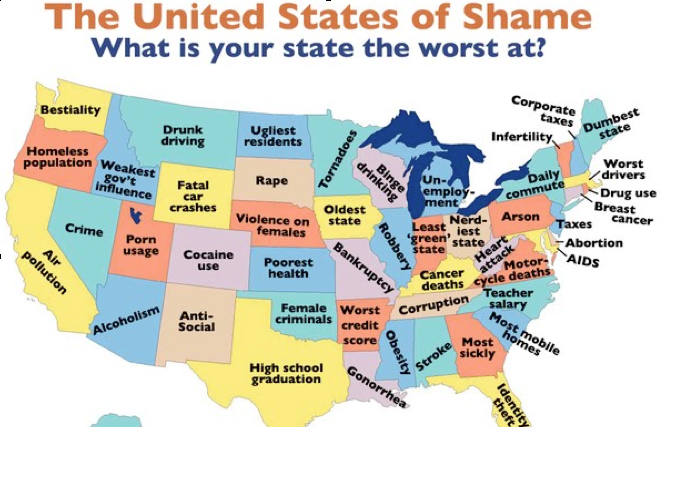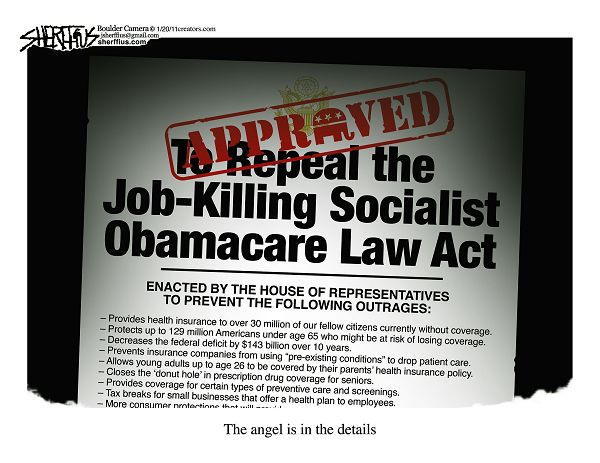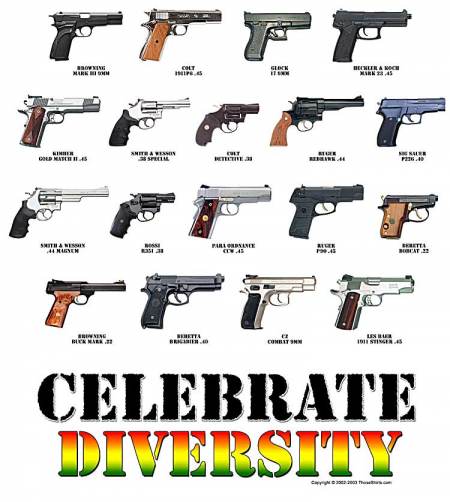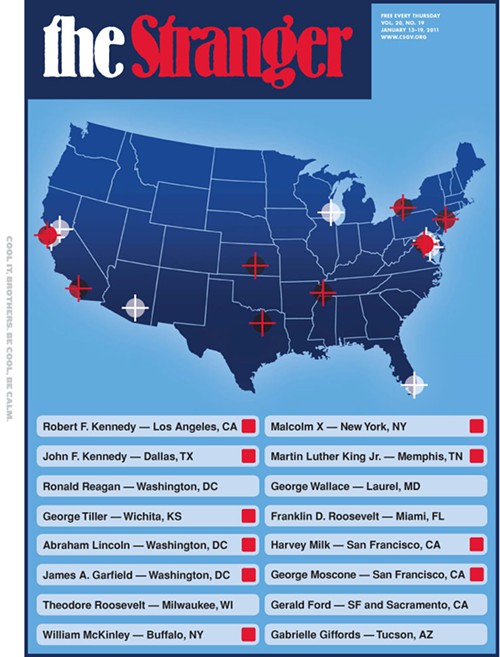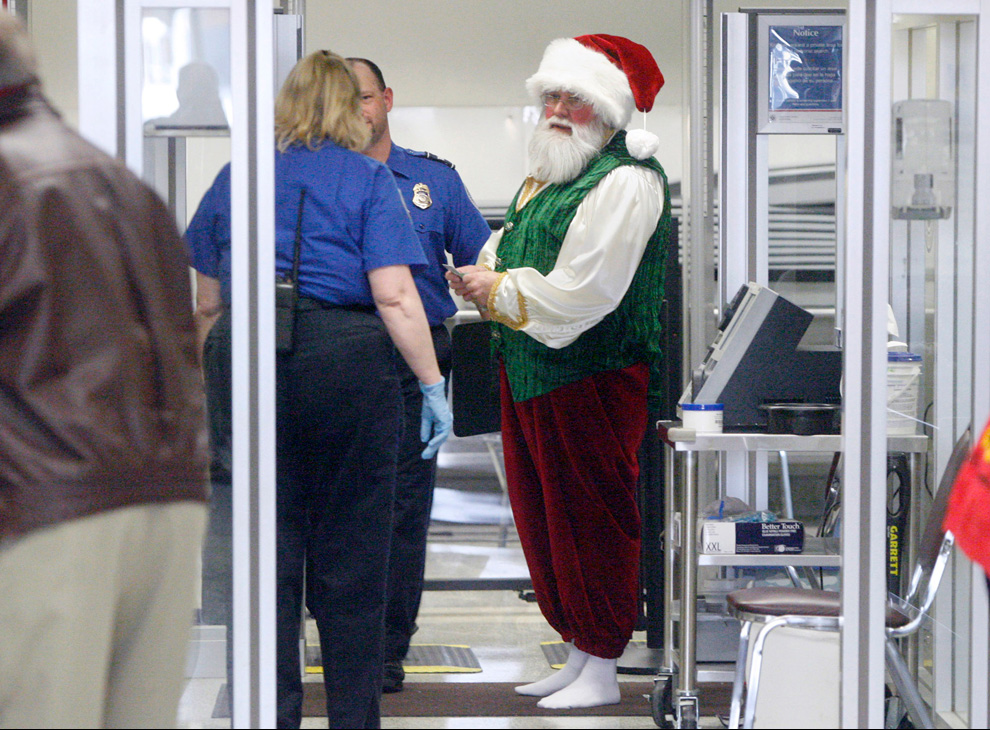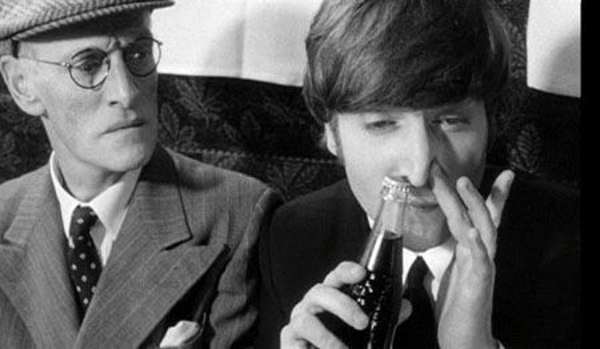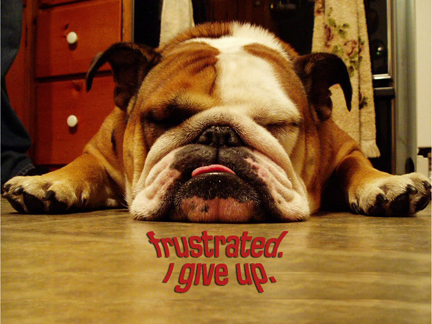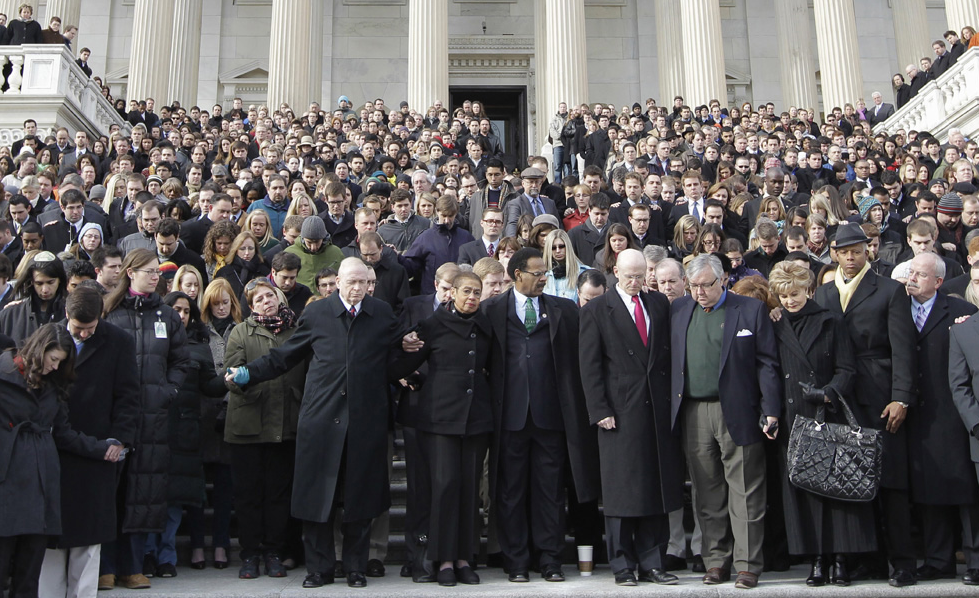
Few things seem to bring the American people together as one as the shared heartache that follows upon the violent tragedies of the sort that unfolded in Tucson this past week. Columbine, Oklahoma City, 9/11, Ft. Hood, Blacksburg,… the list goes on. And it is as it should be, for as the poet put it, “any man’s death diminishes me.” And indeed, there is something comforting about the photographic record that models a public culture of sorrow and grief as a fundamental (or perhaps transcendent) sense of care and community. In everything from images of the makeshift memorials comprised of an anonymous outpouring of flowers, prayer cards, and stuffed animals to candlelight vigils and to collective moments of silence, as in the photograph above of congressional staff members standing on the steps of the U.S. Capitol, we are given the opportunity to see who and what we are (or who we can become). No matter differences divide us on other matters, the photograph implies, there is nothing that will stand in the way of our common humanity.
That said, there is also something just a little bit dispiriting about such formulaic visual displays, for they imply in their own way that we can only overcome our differences to recognize that common humanity as ritualistic responses to violence and tragedy. And when the cameras go away, and when the media turns its attention to other matters, in a week or two or three, that sense of commonality will survive as only a distant and fading memory, replaced by selfish interest. Until the next time, of course—and it will come.
The problem here is not that we should avoid disagreement or difference, or that we should strive to live in that ideal world where “everyone can just get along.” A productive democratic culture thrives on, indeed requires, a vital sense of difference, as well as robust debate and dissent, lest it become socially and culturally rigid and self-satisfied. Rather, the problem is the sense in which our normative notion of community is too often visualized as a unified, ceremonial response to occasional violence—think here of what animated the so-called “Greatest Generation”—rather than as a mechanism for negotiating the relationship between commonality and difference in a humane way on a daily basis. The question is, how might one envision community without such rigid unity?
Credit: Charles Dharapak/Associated Press.
5 Comments
